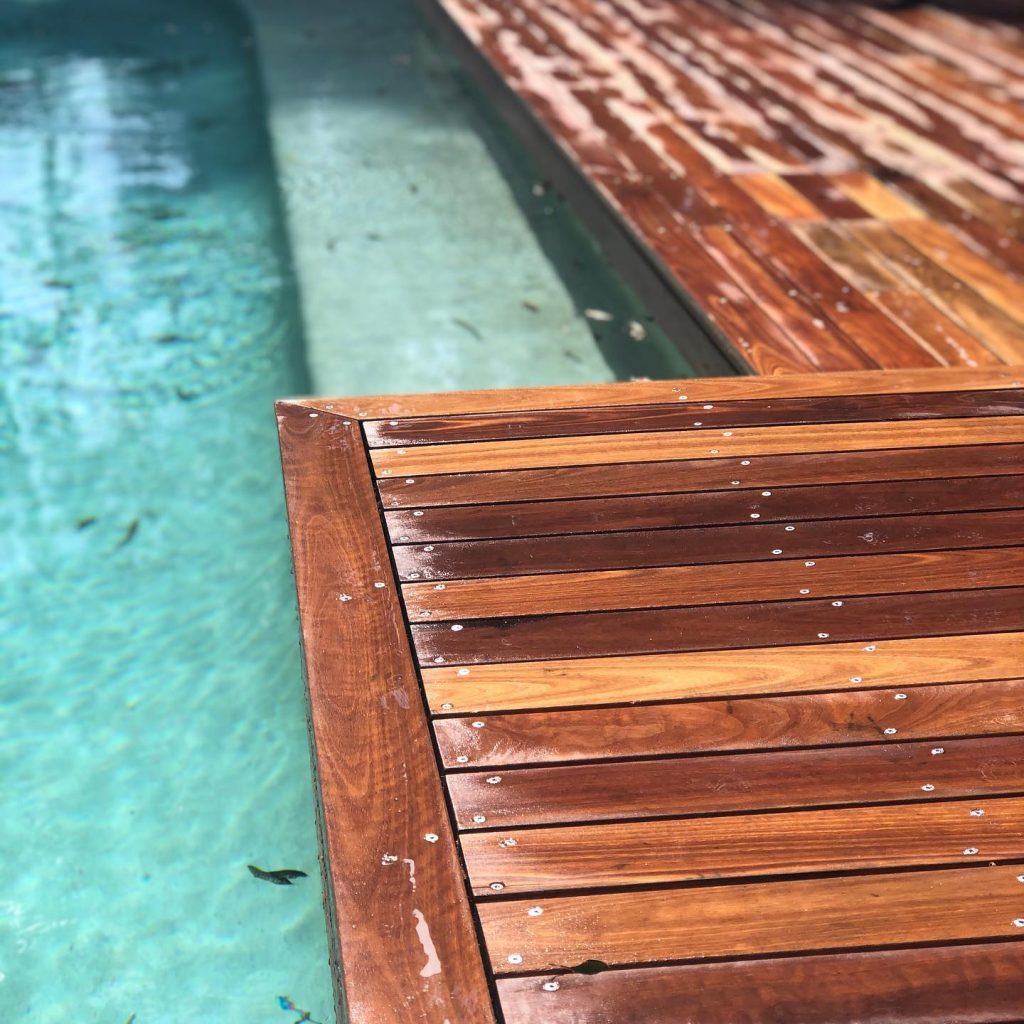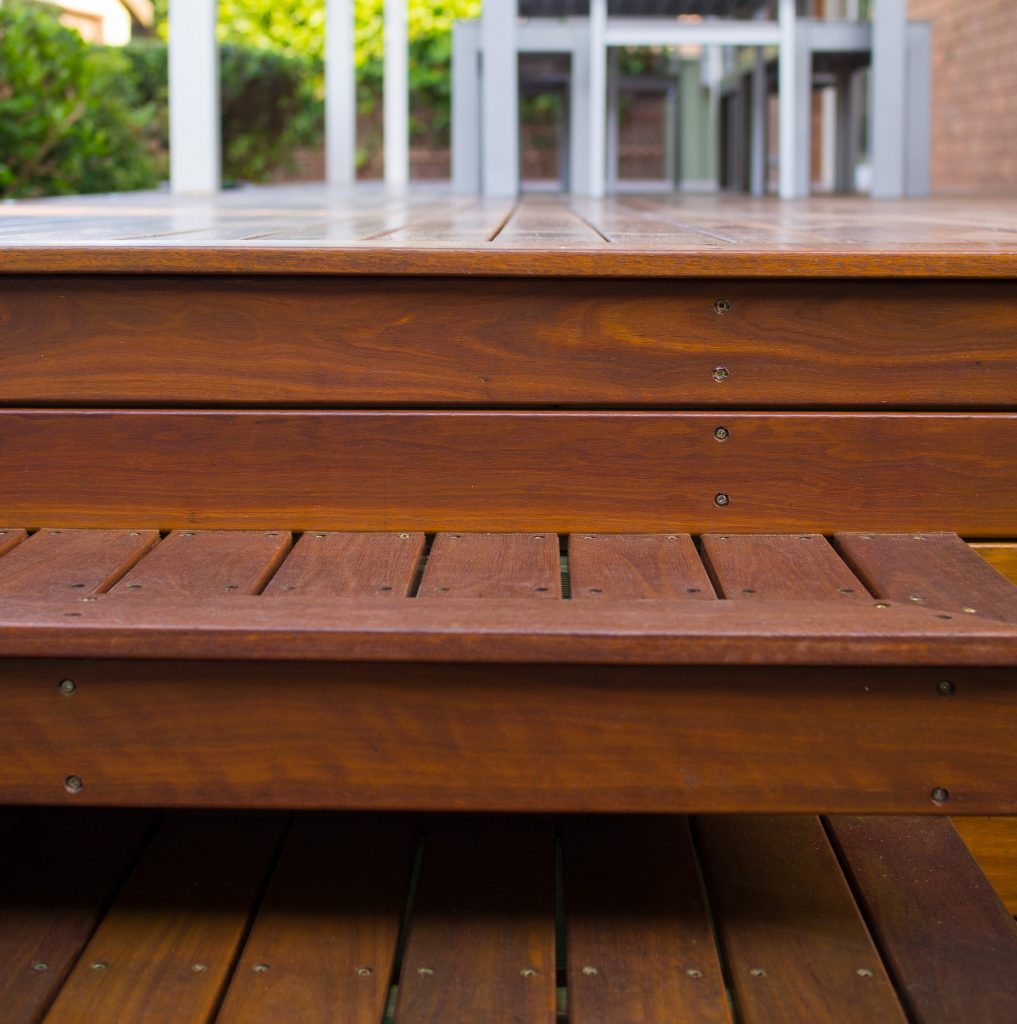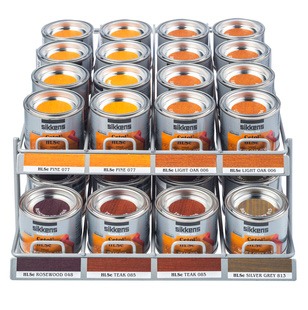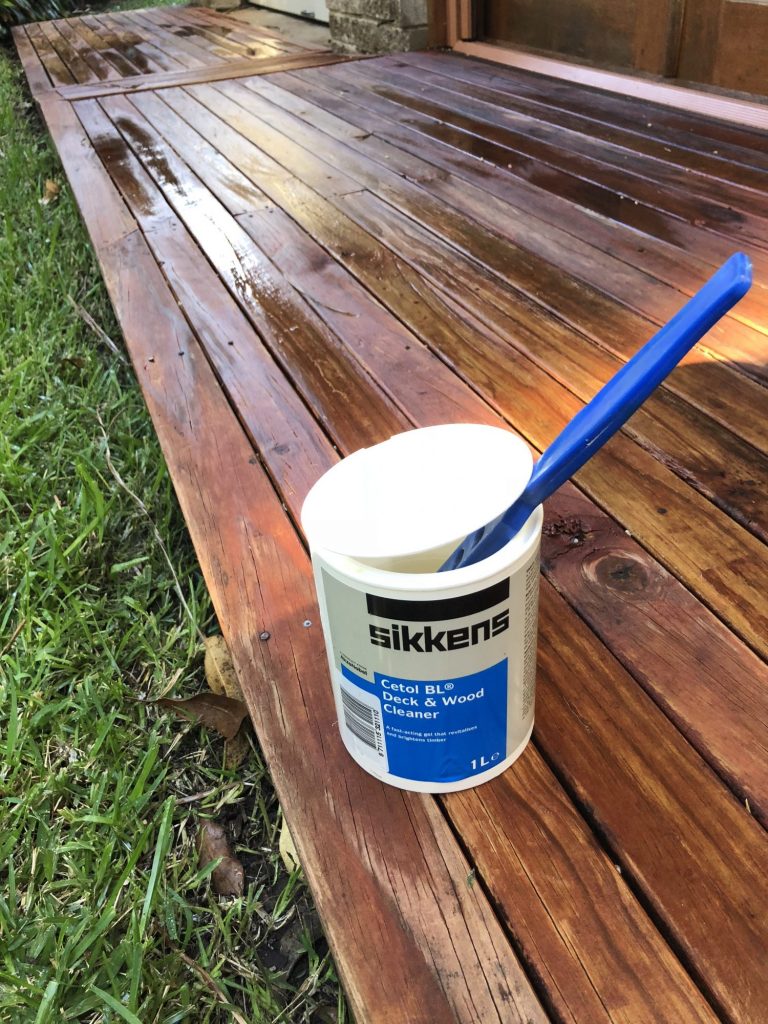6 IMPORTANT CARE TIPS FOR YOUR DECK
Deck care tips – Sikkens
When it comes to decking, the key to achieving a professional finish is a well-prepared surface. Ensure that the timber is well seasoned, free from natural tannins and oils, and clean. While regular sweeping and cleaning is valuable, a deck re-coat is recommended every 12 to 18 months to maintain the quality, durability and appearance of the timber.

New timber decks need extraction of natural tannins and oils
New or un-seasoned hardwoods contain natural tannins that need to be extracted prior to coating. Tannins are found in plants to help protect against insect attacks, and often appear as brown stains or can commonly be mistaken for timber coating that has been washed off by the rain.
The tannins and oils can be naturally drawn out by leaving the hardwood timber to weather between three to six months after installing the deck. For those wanting to coat the deck sooner, there are products available to accelerate the weathering process and extract tannins and oils in just 20 minutes. Coating unweathered timber results in the premature break down of the applied coating and within a short time will leave obvious and unappealing discolouration and staining under the coated surface.
Oil vs. water based coatings
Whether its oil or water based, each finish has its own pros and cons. When choosing a finish, it generally comes down to personal preference, where the timber is positioned and time availability. While oil based coatings are able to penetrate deeper into the wood and provide greater durability particularly in harsh weather conditions, they take longer to dry (up to 24 hours between each coat) and emit strong odours. On the other hand, water based coatings are environmentally friendly and provide longer-lasting colour retention and don’t trap moisture in the timber. They also dry faster, are easier to clean up and have a low odour.

Do not mix water-based and oil-based coatings
It is recommended to stick with the most recently used coating type – whether oil or water based. Those looking to change coating systems will need to completely strip the existing coating back to bare timber prior to re-coating to ensure the best application.
Try before you buy
Grain and colour variations in timber make it difficult to predict how the timber coating will look once applied. Unlike paint, stains are influenced by the wood it is applied to, ensure testing the stain on a hidden area or on a sample piece before committing to a colour. Try and source a brand with sample pots, that way a variety of coating colours can be tested without the expense of buying larger tins.
For the best UV protection, it’s important to select a stain rather than a clear coating as damaging UV rays can still penetrate a clear coating. Stains contain a pigment that reflects or absorbs the UV light and shields timber, keeping it stronger and lasting longer.

Importance of cleaning the deck
Ensure the timber is clean and free from dirt and grime to allow the new coating to properly penetrate and adhere to the timber for long lasting protection. For hardwood decks that are weathered or grey, apply a cleaning product before recoating, this will brighten and revitalise the timber, in preparation for recoating. Select cleaning and coating products from the same brand of coating to ensure they work properly as a system to form a strong and durable finish.

Importance of recoating
Signs a deck may need to be recoated include peeling, flaking, discolouration, mould growth or greying of the timber surface. If the deck is in bad condition, it may be necessary to strip back and sand before applying a new coat. Any areas affected by mould or mildew must be treated properly before recoating, otherwise mould will continue to grow underneath the new coat and ultimately create an unappealing finish.